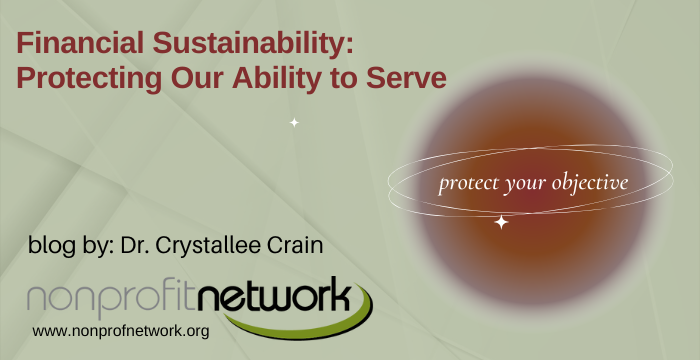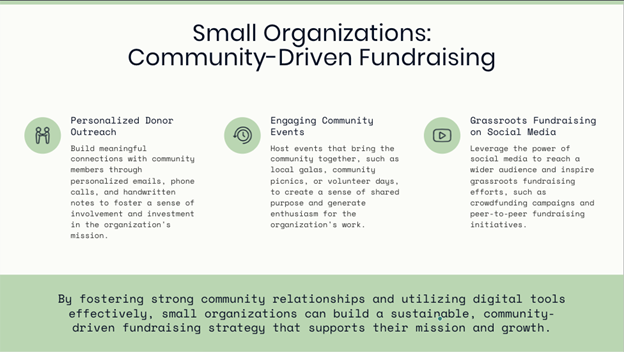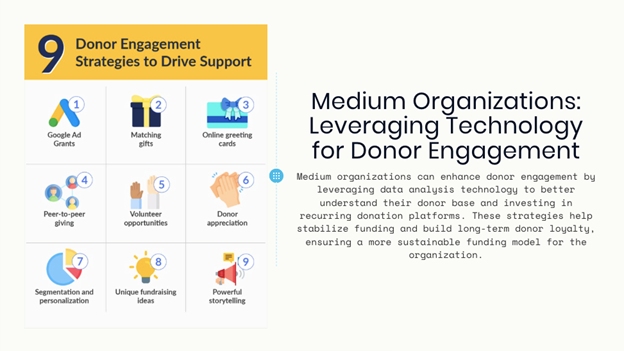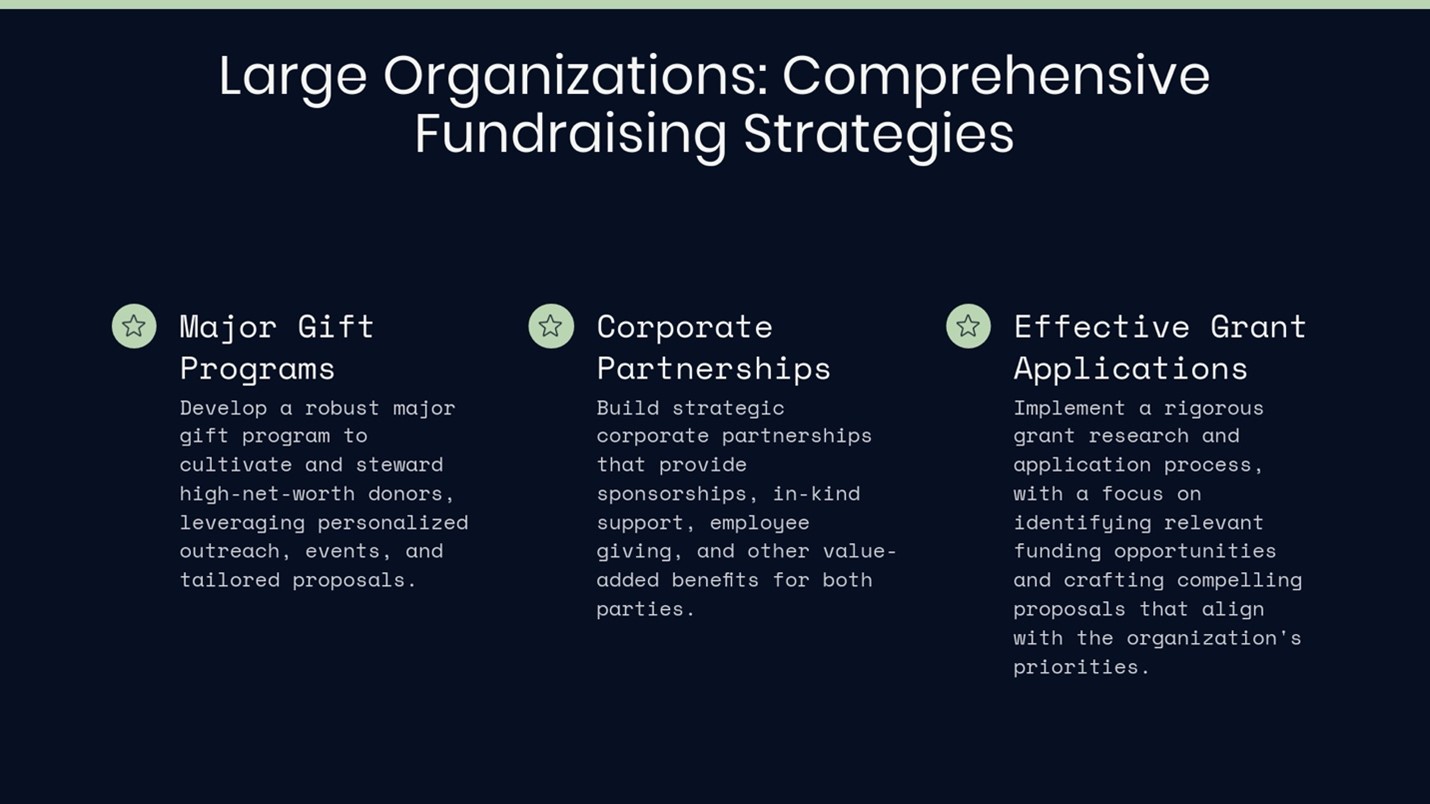Financial Sustainability: Protecting Our Ability to Serve


Crystallee Crain, PhD.
Director of Non-profit Impact Consulting
Financial Sustainability: Protecting Our Ability to Serve
In the intricate realm of nonprofit management, financial sustainability is a critical component, ensuring the longevity and effectiveness of organizations dedicated to serving their communities in equitable ways.
Central to this sustainability is the indispensable contribution from individual donors. Research indicates that over 80% of donations to nonprofits originate from individuals, underscoring the necessity for organizations to prioritize these donors within their funding strategies (Buse et al., 2023).
By focusing on equity in fundraising practices, nonprofits can engage diverse donor populations, ensuring that funding sources reflect the communities they serve (Dolan, 2023). This exploration will highlight various strategies for fostering relationships with different types of individual donors and examine a range of online and offline fundraising approaches that can enhance a nonprofit's financial health while safeguarding their mission to serve effectively.
Emphasizing individual donations as the backbone of funding is essential for advancing economic justice within our communities. Individual contributions—whether one-time gifts, recurring donations, or planned giving—represent a significant portion of nonprofit revenue. This inclusive approach acknowledges the diverse ways individuals from all backgrounds can support crucial initiatives, whether through online platforms, offline events, or auctions (Smith & Adams, 2022). By focusing on engagement with all types of individual donors, organizations can cultivate a broader base of support, reflecting values of equity and inclusion. A diverse fundraising strategy enhances overall effectiveness while reinforcing community ties, ensuring that every voice contributes to meaningful change (Johnson, 2023).
To effectively harness the potential of individual donations, nonprofits should recognize the different types of donors while using language that is trauma-informed and sensitive to community needs.
Major Donors: These individuals can provide crucial funding that propels an organization forward. While their support is valuable, it’s important to cultivate a diverse network of contributors to avoid over-reliance on any single donor. Utilizing wealth screening tools can help identify potential major donors and encouraging them to offer matching gifts can inspire collective giving.
Regular Donors: This vital group constitutes the largest segment of a nonprofit’s supporters. Although individual contributions may be smaller, their collective impact is significant. Implementing regular giving programs ensures sustainability and stability. Understanding donor motivations through data analytics can help facilitate the transition from one-time gifts to ongoing support.
Planned Giving: Often underutilized, planned gifts can provide meaningful financial security for nonprofits. These contributions require proactive engagement and sensitive conversations about legacies, helping ensure long-term stability and community welfare.
Online versus Offline Donations
With the rapid evolution of fundraising technologies, nonprofits must balance traditional and modern fundraising techniques.
Online Fundraising: In today’s digital landscape, nonprofits must invest in user-friendly websites and effective online donation pages. Various online tools, such as crowdfunding and peer-to-peer fundraising, harness the power of social networks to amplify reach. Email marketing remains a cost-effective strategy to engage donors and keep them informed about the organization’s mission, using compelling narratives to draw support.
Offline Fundraising: Despite the rise of online contributions, traditional methods still hold value—especially among older donor demographics. Direct mail, phone solicitations, and fundraising events provide opportunities for face-to-face interactions, which can strengthen personal connections between the donor and the organization. Events not only facilitate fundraising, but they also enhance a nonprofit’s visibility and deepen relationships with existing supporters.
Diversifying Funding Sources for Financial Health
While individual donations are essential, nonprofits should also explore other funding avenues to bolster sustainability. Here are a few options worth considering:
- Grants: Applying for grants from various levels of government, private foundations, and public charities can provide substantial financial resources. These grants often have specific objectives, allowing nonprofits to target funding toward strategic initiatives.
- Corporate Sponsorships: Partnering with socially responsible corporations can yield mutually beneficial partnerships. These organizations often seek to enhance their philanthropic profiles and may offer funding, in-kind support, or opportunities for employee volunteerism.
- Membership Fees: Establishing membership programs enables organizations to create a steady revenue stream by offering exclusive benefits or services to members, fostering a sense of community and ongoing support.
- Selling Goods and Services: Nonprofits can generate income by selling branded merchandise or charging fees for specific services. It’s crucial that these activities align with the organization’s mission to avoid potential tax complications.
- Organizational Endowments: Developing an endowment can provide long-term financial stability for nonprofits, allowing them to secure a source of income that supports ongoing operations and initiatives. Additionally, endowments can grow over time, increasing the organization's financial sustainability.
- In-Kind Donations: While not direct funding sources, in-kind donations—such as food, clothing, or professional services—can significantly reduce operational costs. By leveraging these contributions, nonprofits can free up financial resources to allocate toward critical program areas.
- Participatory Funding: Engaging funders in participatory funding options allows them to play a direct role in decision-making processes regarding resource allocation. This collaborative approach empowers donors and communities to determine which projects or initiatives receive funding, thereby fostering greater community involvement and support.
Recommendations for Financial Sustainability
For nonprofits of all sizes—the strategies may vary, but the objective remains the same: to protect the organization’s ability to serve while promoting equitable practices.



The essence of financial sustainability in nonprofits goes beyond securing funds; it embodies a commitment to serve the community effectively and equitably. By prioritizing individual donors, diversifying funding sources, and employing innovative strategies, nonprofits can enhance their financial health and resilience. Ultimately, the ability to serve is not merely a question of resources—it is about fostering trust, cultivating relationships, and leading by example in the pursuit of a just and equitable society.
As leaders in the nonprofit sector, we must unite our collective strength to safeguard our missions, nurture our communities, and ensure our capacity to serve all populations, especially the most marginalized. It is crucial to maintain our ability to provide access to basic needs, as those who are often overlooked depend on our support for their survival and dignity.
By prioritizing inclusivity and equity, we can inspire meaningful change and uphold the integrity of our efforts, ensuring that no one is left behind as we work toward a better tomorrow. Together, we can champion the rights of every individual and create a more just society for all. If you'd like to schedule a time for a discussion around this topic or any other strategies, please email [email protected] so we can schedule a time together.
References
Buse, K., Hamer, M., & O'Brien, M. (2023). Navigating Financial Sustainability in Nonprofit Organizations: Strategies for Individual and Corporate Donor Engagement. Journal of Nonprofit Management, 15(2), 88-105.
Dolan, E. (2023). Equity in Fundraising: Engaging Diverse Donor Bases for Sustainable Giving. Nonprofit Quarterly, 12(1), 45-61.
Johnson, R. (2023). Building Community through Inclusive Fundraising Practices. Nonprofit Management Review, 28(1), 102-118.
Smith, J., & Adams, L. (2022). The Role of Individual Giving in Nonprofit Sustainability. Journal of Philanthropic Studies, 15(2), 45-62.
Want even more? Click here to sign up for our weekly e-newsletter. Each week you'll get a link to the most recent news, workshops, and sector updates. We promise to respect your time and will not flood your inbox. We send a weekly Friday e-newsletter and if any important announcements need to be made.

